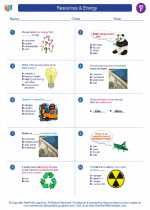Siblings: An Explanation
Siblings are individuals who share at least one parent in common. They are members of the same family and typically grow up together in the same household. Sibling relationships can vary widely, ranging from close and supportive to distant and competitive.
Having siblings can have a significant impact on a person's social, emotional, and cognitive development. Siblings often play a key role in shaping each other's personalities, values, and behaviors. They also provide companionship, support, and opportunities for learning important social skills.
Types of Sibling Relationships
There are different types of sibling relationships, including:
- Close Siblings: These siblings have strong emotional bonds and enjoy spending time together. They often provide each other with support and understanding.
- Rival Siblings: These siblings may compete for attention, resources, or parental approval. Their relationship may be characterized by jealousy and conflict.
- Disconnected Siblings: These siblings have limited interaction and may not feel emotionally connected to each other. They may lead separate lives and have little in common.
Roles Within Sibling Relationships
Within sibling relationships, individuals may take on different roles, such as:
- Oldest Sibling: Often seen as a leader and may take on responsibilities for younger siblings.
- Middle Sibling: May act as a peacemaker or mediator between other siblings.
- Youngest Sibling: Often receives attention and may be seen as the "baby" of the family.
Study Guide: Siblings
Key Concepts
- Define the term "siblings" and explain the significance of sibling relationships.
- Identify and describe different types of sibling relationships, including close, rival, and disconnected relationships.
- Discuss the potential impact of sibling relationships on social, emotional, and cognitive development.
- Explore the roles that individuals may take on within sibling relationships, such as oldest, middle, and youngest siblings.
Discussion Questions
- How do sibling relationships contribute to an individual's social and emotional development?
- What are some factors that can influence the nature of sibling relationships within a family?
- How might birth order impact the roles and dynamics within sibling relationships?
- What are some potential challenges that may arise within sibling relationships, and how can they be addressed?
Activities
- Interview a family member or friend about their experiences with their siblings. Ask them to discuss the nature of their relationship and the impact their siblings have had on their lives.
- Create a family tree that includes information about siblings, birth order, and any notable characteristics or dynamics within the sibling relationships.
- Write a reflective essay discussing the role of siblings in shaping personal identity and values.
By understanding the complexities of sibling relationships, individuals can gain valuable insights into the dynamics of family life and the ways in which these relationships can influence personal development.
.◂Social Studies Worksheets and Study Guides Sixth Grade. Resources & Energy

 Worksheet/Answer key
Worksheet/Answer key
 Worksheet/Answer key
Worksheet/Answer key
 Worksheet/Answer key
Worksheet/Answer key
